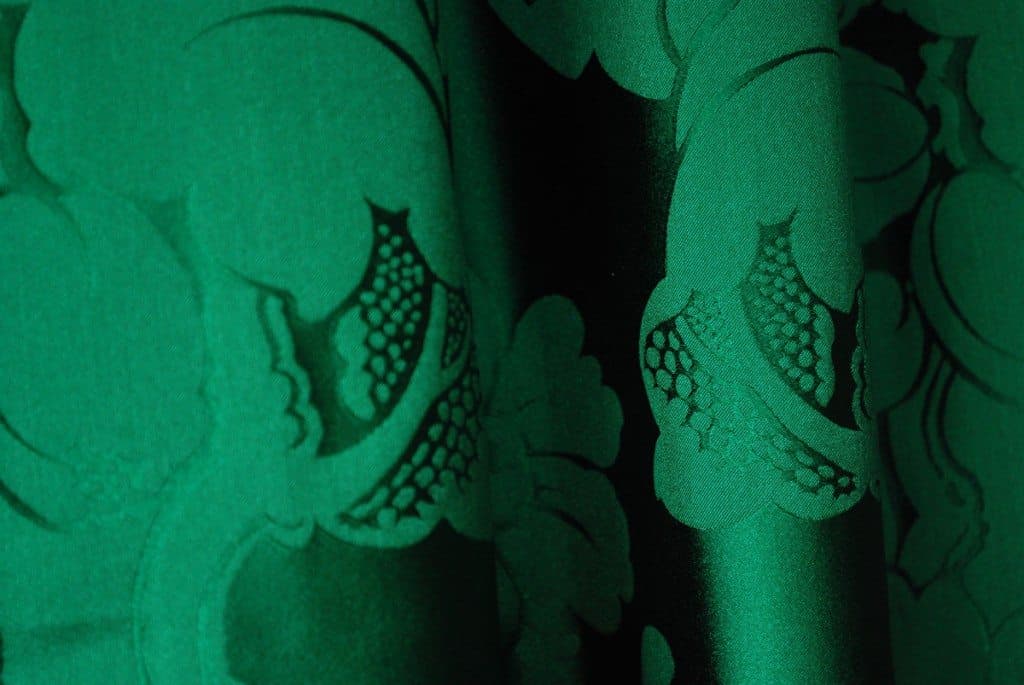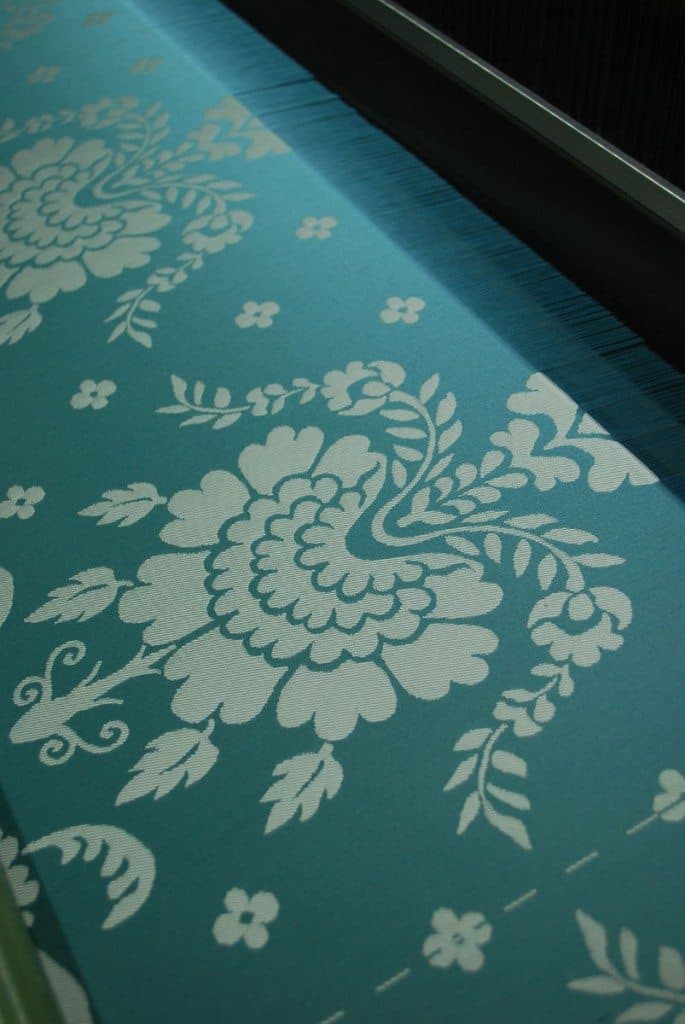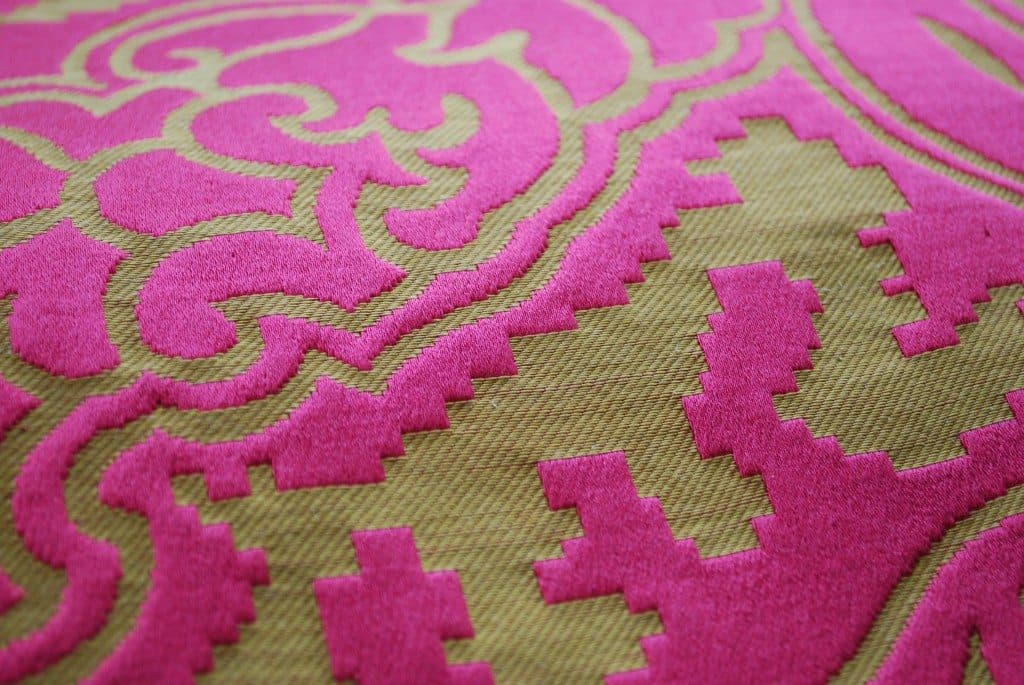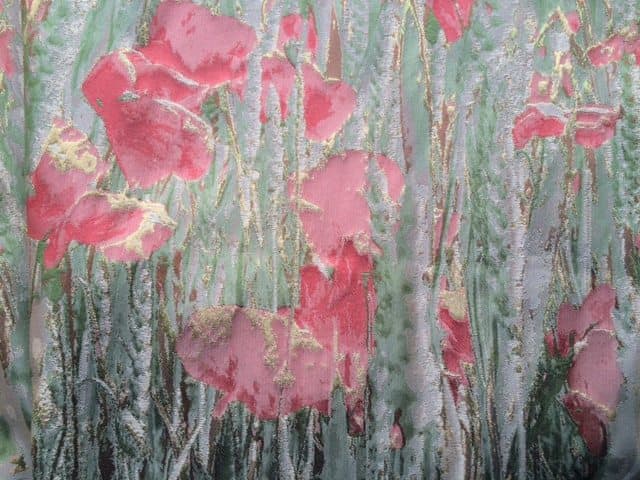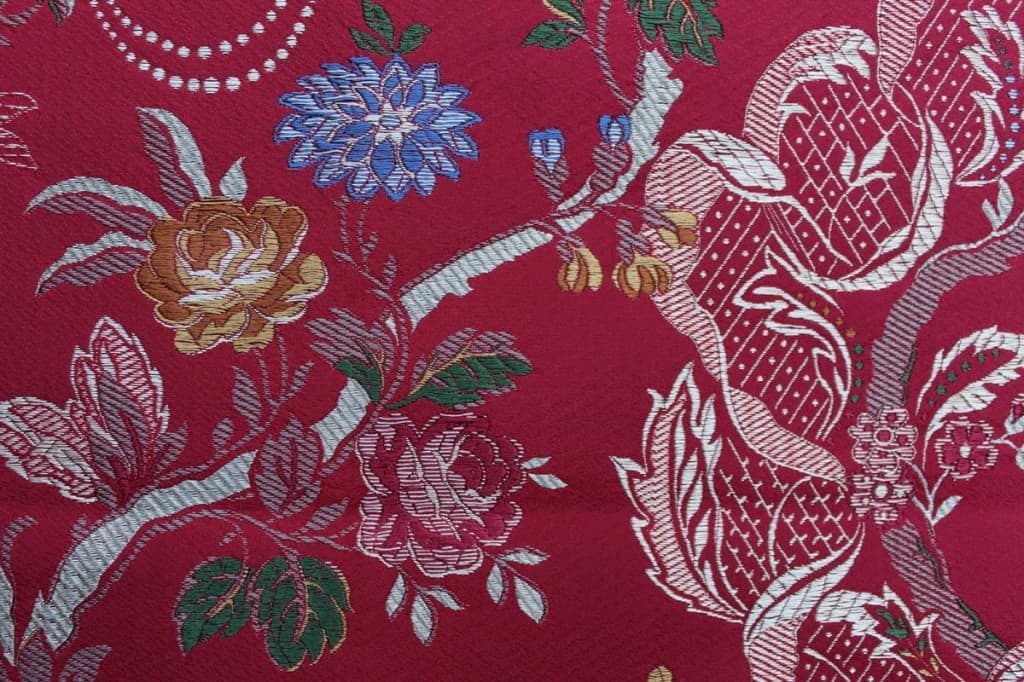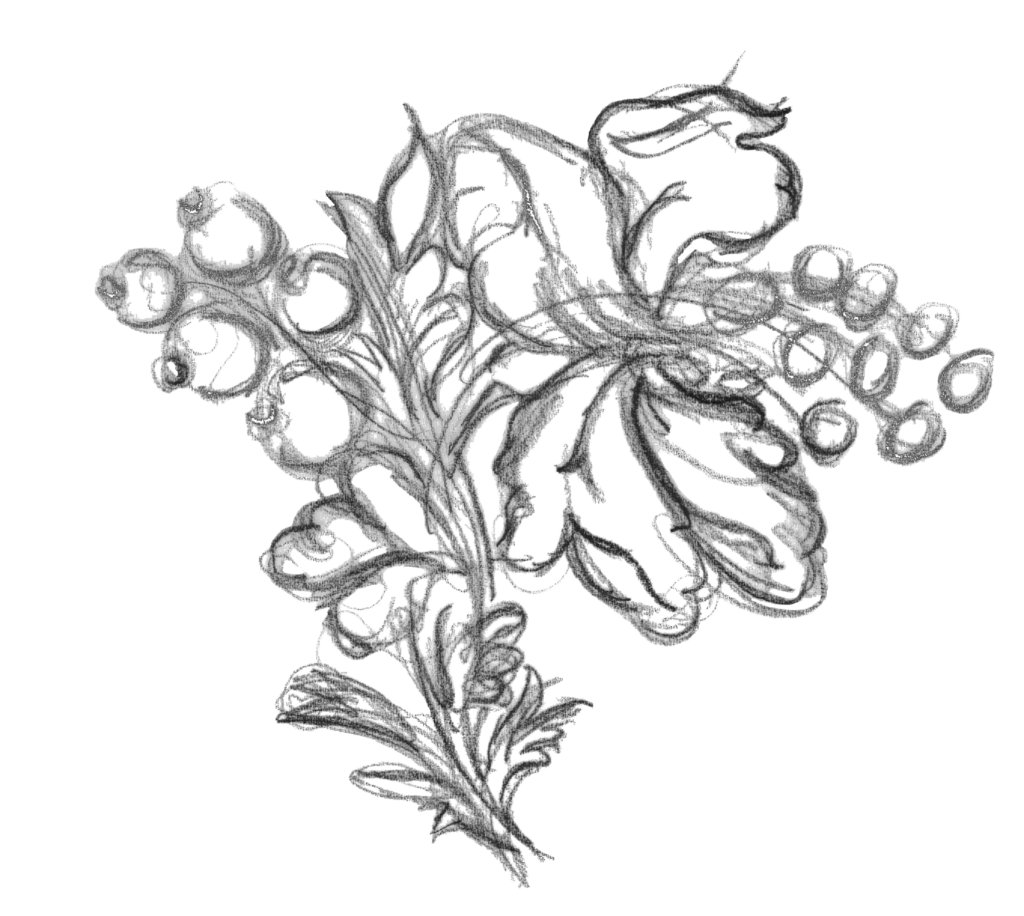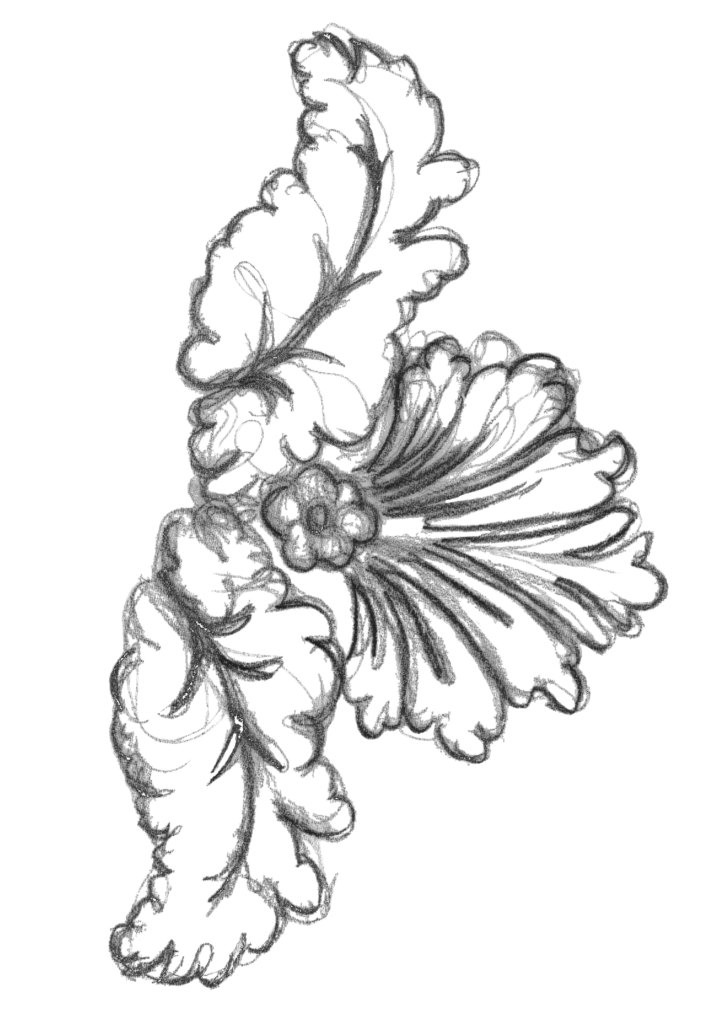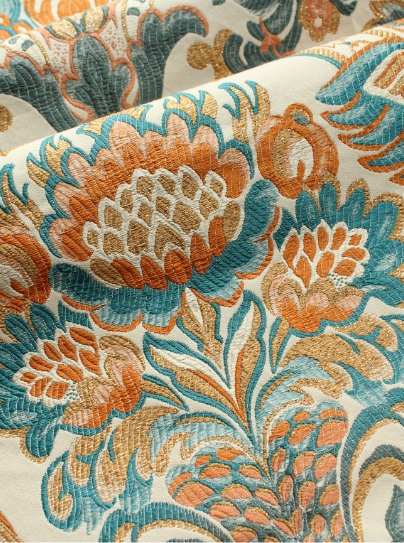Complex weave structure is really where the Jacquard loom has flourished since its invention in 1803 by Joseph Marie Jacquard.
As with simple weave structures the principles remain the same with two sets of threads; the warp threads running vertically through the loom and the horizontal weft threads. The way in which these threads entwine creates the structure. We even have the ability to have additional warp and weft threads to build upon the complexity. It is important to note that simple structure are the backbone of complex structure and are often used as part of a more intricate weave.
Damask
Damask is a perfect example of interlinking simple weave structure with complex weave structure. Often damask is referred to as a type or style of fabric relating to the pattern but in fact is a structure of cloth. In broad terms damask consists of one warp and one weft; a single cloth construction. Generally damask features satin in the ground of the design, showing more warp colour and a sateen in the figure showing more of the weft colouring. Good examples of damask can be seen up and down the country in grand stately homes. A particular favourite example of mine is seen adorning the furniture and walls of the state dining room at Alnwick Castle, Northumberland in a self-colour green silk.
In some instances the designer may opt for a different weave in the ground, or more likely the figure, to add interest and give a different effect in the cloth. This is the case in the example of Stowe House, Buckinghamshire, shown below. The satin ground is complimented with a 7/1 twill figure. The white weft brings a striking contrast to the figure against the sumptuous blue warp ground.
Brocatelle
Brocatelle is almost the opposite cousin to damask in the sense that the ground is made up of the weft and the warp creates the figure. The reason for this is that the characteristic of a brocatelle is to have a pouted or raised figure. As a fabric type it is sometimes referred to a poor man’s figured velvet as it is a more cost effective way to have a cloth with relief. By no means an inexpensive fabric, brocatelle harbours a great deal of high quality silk to provide the coverage required in the design but could be an alternative solution to figured velvet. A brocatelle is woven with two silk warps of differing weights for tension purposes and two wefts; one of silk and one of linen. The Speaker’s State Bed at the Palace of Westminster, London is a good example of a brocatelle fabric.
Tissue
Tissue is a figured fabric with one warp but more than one weft to produce figuring of a differing style and colour. Up to 8 weft colours can be used continuously or in bars (known as lampas). Tissue fabric can be made in a variety of yarn choices. We often create tissue fabrics in modern textures for contemporary interior schemes and specialist projects. One such example is the silk and lumiyarn tissue table runner for artist Lucy Orta. Although much of the colour is created through differing weaves, the three weft tones in the fabric run continuously throughout, creating the tissue structure.
One of Richard Humphries most notable stories regarding a tissue fabric belongs to that of the Isabella Stewart Gardner Museum, Boston called the Norfolk tissue.
Again the tissue structure is created with three weft tones; one to tie the ground warp and the other two to provide the tones in the figure.
Lampas
Lampas derives from tissue and brocade. In brocade fabrics there are many colours used in the face of the cloth; at the time brocade weaving was popular labour was cheap but silk was expensive and so was not wasted. The painstaking task of the weaver was to only use the silk where necessary and not tie it into the back to avoid this wastage. In lampas weaving a similar outcome arises with many colours on the face of the cloth however, the yarn is tied into the back of the cloth and features in horizontal bars. By applying colour in bands and swapping one shade for another where required, we are able to reduce the overall cost of the fabric.
We produced a pure silk lampas fabric for the Foreign and Commonwealth office, Lancaster House, London that derived from a Humphries Weaving archive document; a silk and silver 18th century brocade. In the floral decoration you notice that one flower is red, the next is yellow and the next blue with no overlap in the colours between, which is characteristic of a lampas.
The possibilities of woven structure are open to the designer whether that is in simple or complex ways. The challenge is in creating a fabric that utilises one of these methods to adhere to the vision of the person it is being custom made for.
